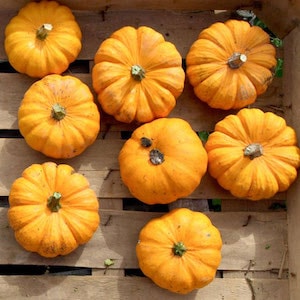What to do in your allotment in October
Written by Lee Senior
Autumn is here in earnest and frost is likely to make an appearance in parts of the UK soon. Trees are turning a delightful mix of russet-coloured hues and some are already shedding their leaves.
There are a number of key jobs to tackle in October as the temperature start sto plummet. In the greenhouse, I’m harvesting any remaining green tomatoes to make chutney. Alternatively, you can bring them inside to ripen alongside a bunch of bananas. You should aim to clear your tomato plants by the end of the month as frost will ruin the fruits. Likewise, if you’re growing pumpkins, keep a keen eye on the weather and harvest before the first frost if you’re hoping to store your gourds.
Out on the plot, I’m just waiting for a dry day to pull up all my remaining summer cropping plants and add them to the compost heap. Happy growing!
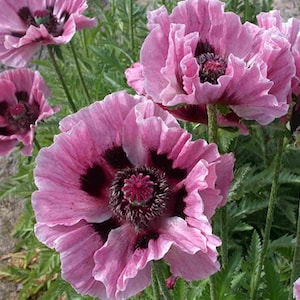
Image: Papaver Manhattan
Allotment flowers in October
- Autumn-sown sweet pea seeds can be started off during late October. They’re best sown in a cold greenhouse and kept under glass over winter for planting out in spring.
- Lavender seeds can also be sown now and treated in the same way as sweet peas.
- Sow phacelia and poached egg plant seeds ready for next year. These flowers attract beneficial pollinators to the plot.
- The main bulb-planting season is now upon us. Spring-flowering bulbs like daffodils and crocus can be planted now for bright displays next year.
- The autumn crocus (Colchicum) comes into flower in October. Its dainty pink flowers add a welcome late season splash of colour to pots and window boxes.
- The first proper frost will see dahlias blackened. When this happens, cut the foliage hard back to several centimetres from the tubers before digging them up. Dry the tubers off before overwintering them is a frost-free place, perhaps a garage or outbuilding.
- Autumn is a good time to take hardwood cuttings of some of your favourite shrubs. Suitable candidates include lavender and ribes (flowering currant). Lavender benefits from pruning after flowering and this provides plenty of suitable woody material. Laburnum is also suitable for hardwood cuttings.
Allotment vegetables in October
- There’s still time to purchase autumn-planting garlic. Plant the bulbs outside in specially prepared, well-drained, fertile soil containing plenty of well-rotted manure. The ‘Lovers Autumn Collection’ is a great idea as it contains four varieties suitable for autumn planting. Choose a hardneck type like ‘Kingsland Wight’ if you live somewhere very cold.
- Throughout the month, continue to plant out your overwintering onions and shallots in well-drained soil or raised beds. Cover the sets with netting until they establish roots, to stop the birds digging them out.
- Hardy pea ‘Douce Provence’ can be sown in October and November for an earlier crop next spring. The peas can be sown directly in well-drained soil in a sheltered spot. They will tolerate some frost but protective fleece or cloches will be needed. Better still, grow the plants in a cold greenhouse or cold frame for planting out next spring. Unprotected peas are unlikely to survive the winter.
- Clear the tops from your spent beans, peas and sweetcorn plants. If you cut the long stems at the base and lay them on the soil, they act as a weed suppressing mulch. Add them to the compost when they turn from green to brown.
- Protect your cabbages, sprouts and broccoli plants with nets to keep the birds off.
- Sow leaf salad ‘Winter mix’ in a cold frame for fresh leaves in the coming months. There’s still time to sow winter lettuce too – I’m a fan of Cos ‘Winter Density’.
- Rocket ‘Scorpion’ can be sown this month and grown to maturity on a windowsill or in an unheated greenhouse. The hot mustardy flavour adds punch to salads!
- Sow hardy spring onion ‘White Lisbon’ in a cold frame, or in containers or grow bags in the greenhouse, to harvest through the winter and into early spring.
- The middle of the month is a good time to sow a crop of overwintering broad beans. ‘Aquadulce Claudia’ can be sown in root modules, seed trays or pots for an early crop in late spring. Simply grow the beans on in a cold frame, or plant outside in December if you’re lucky enough to have well-drained soil, in a sheltered location. The beans cope with several degrees of frost.
- October is the month to start sowing cabbage ‘F1 Mozart’ and cauliflower ‘F1 Seoul’ to overwinter under cloches or in the cold frame. They’ll give you extra early crops next year.
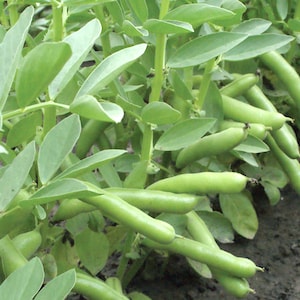
Image: Broad Bean – De Monica
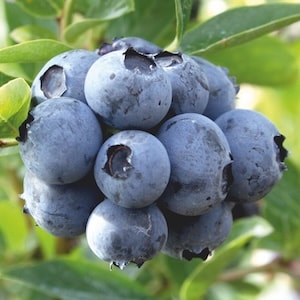
Image: Blueberry ‘Duke’
Allotment fruit in October
- October is the perfect month for moving fruit bushes and trees, and for planting new bare root fruit trees and soft fruit bushes. Their roots benefit from the warmth that remains in the soil before winter frosts. Avoid planting into frozen or waterlogged soil.
- If you intend to grow fig trees, I recommend planting them in large containers in fertile, rich soil and compost. The containers will restrict the rampant roots and encourage the trees to crop in future years. They can be planted through autumn.
- Use a testing kit to see the pH of your soil before planting blueberries. They like acidity, so if your soil is alkali, grow them in a pot with ericaceous compost.
- If you have acidic soil, blueberries are a must-have on any allotment. They’re easy, reliable and delicious eaten straight off the bush. The plants are also stunning in autumn and the fiery red colour of the leaves is as good as anything you will find.
- Late autumn is the ideal time to plant out a new strawberry bed in well-drained soil. The sweet tasting ‘Marshmello’ is a great choice.
- October and November are good months to plant out new rhubarb crowns while there is still some warmth in the soil. Rhubarb is very easy going and will grow in difficult areas, although slightly better soil does give better results.
- During Autumn, hardwood cuttings can be taken from the likes of gooseberries, black, red and white currants. Also grapevines (vitus) can be used for hardwood cuttings as part of any pruning regime.
Crops to harvest in October
- October is the month to harvest pumpkins, gourds and squash. They come in all kinds of shapes and sizes and colours. Pumpkins are a great crop for beginners and children alike. Carving pumpkins is also a fun activity, whatever the weather!
- Sweetcorn should now be ripe – make sure you harvest before the first frosts hit.
- October is the peak apple harvesting season. I eat windfall apples straight away before the rot sets in, if they’re not too badly bruised. Good quality maincrop apples can be stored for a few weeks in a dark, frost-free location. Why not have a go at making cider if you have a glut!
- Pears are often ready to pick this month too. It can be tricky to know when to harvest, but the best time is just before they’re fully ripe. Check that they’re firm and swollen and look out for a subtle colour change of the skin of the fruit.
- Beetroot, carrots and chard are all in season.
- Harvest any remaining potatoes and grade them before storing for use in autumn and winter. Any tubers that have blemishes or damage should be kept separate and eaten first.
- Florence fennel should be harvested before any frost damage.
- Early varieties of leeks should be harvested before the onset of harsh weather as they are less hardy than the winter types
- Make sure you’ve harvested all of your summer crops and give your onions, shallots and garlic plenty of time to dry before storing.
- Healthy sweet pepper and cucumber plants will carry on a little longer until they are finally cut down by cold, frosty weather conditions.
- If you have any unripened tomatoes, take the fruit off the vine and bring them indoors to ripen. If you have a large quantity, try making green tomato chutney.
- In the greenhouse and polytunnel, tomatoes will continue to ripen for a little longer. Remove spent foliage from the plants and stop all new shoots so the plant diverts its energies towards developing and ripening any immature fruit.
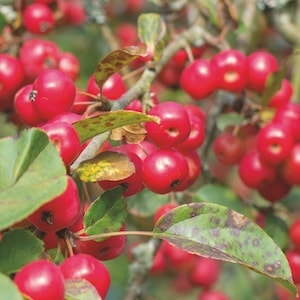
Image: Crab Apple Red Sentinel
General October allotment jobs
- Keep on top of weeding as the beds are exposed to light when crops are cut back.
- Sow green manure seeds on empty beds to keep the soil covered over winter. This puts nitrogen back into the soil and prevents run-off in heavy rain.
- It’s time to take down pea and bean wigwams and frames.
- Sort out your composting area as it’s a great time to add prime fodder to your pile.
- Find a local source of horse manure. Use an empty bed to rot a pile down for use next year.
- Try planting a native bare root hedge on your allotment for wildlife. An edible hedge could give you a niche crop of crab apples, sloes and hawes to make jellies and jams.
- Stay off the soil when the ground is wet. Walk on broad flat planks if you need access to avoid compacting the soil.
Planning ahead
- Get in as much allotment time after work as possible before the clocks go back later in the month.
- Order in plant protection gear to prevent frost damage during the winter months.
- Invest in a cold frame for your plot if you haven’t already got one. They’re a great way to protect young crops from the worst of the winter weather.
- It’s time to start thinking about next year. Make a list of what worked and what didn’t.

Image: Bell Cloche
Suttons Seeds recommend these areas which may also be of interest.
- Previous month: What to do in your allotment in September
- Next month: What to do in your allotment in November


